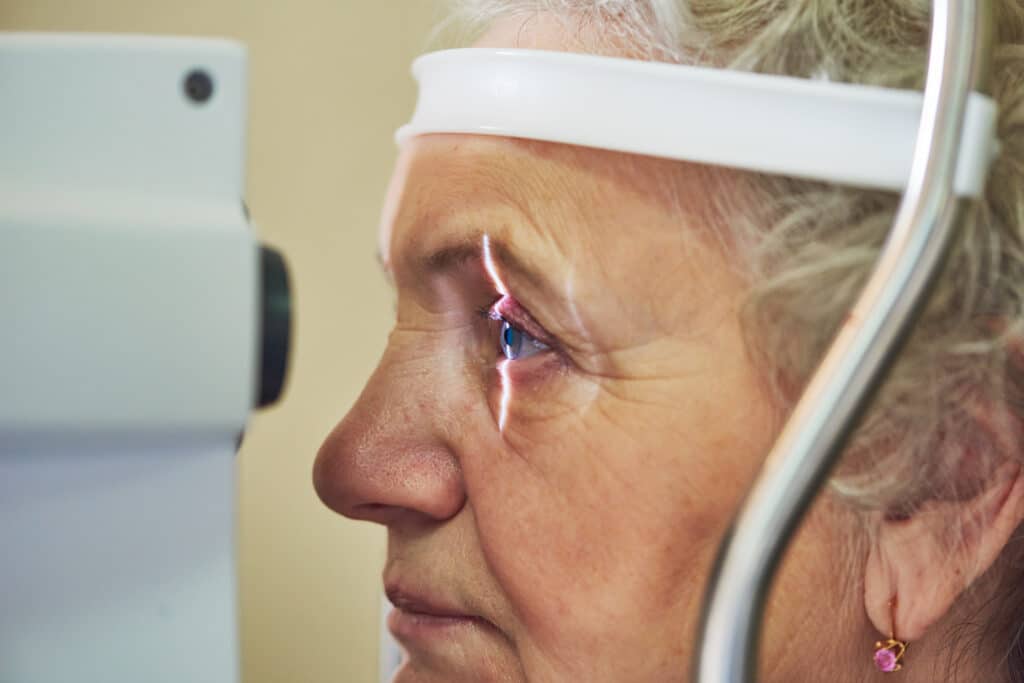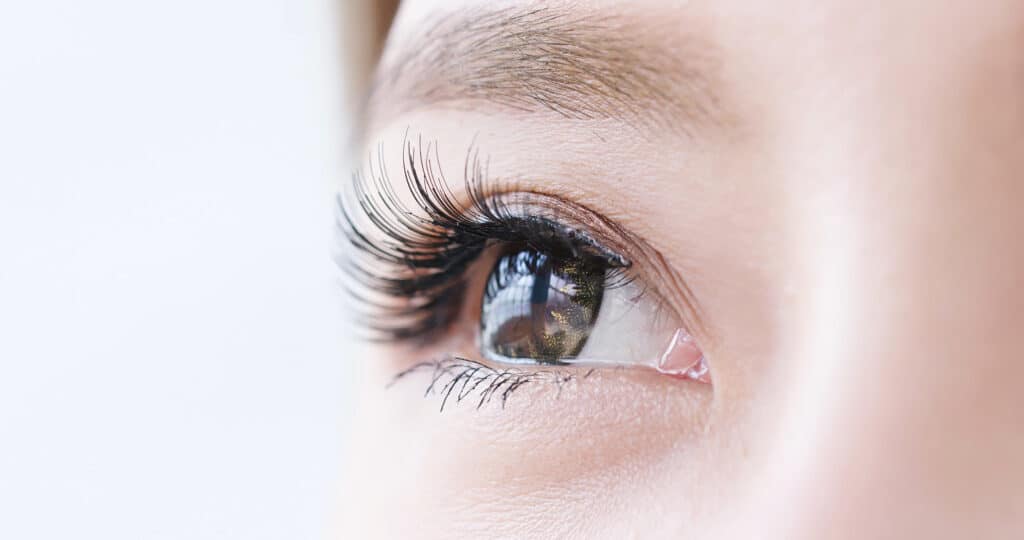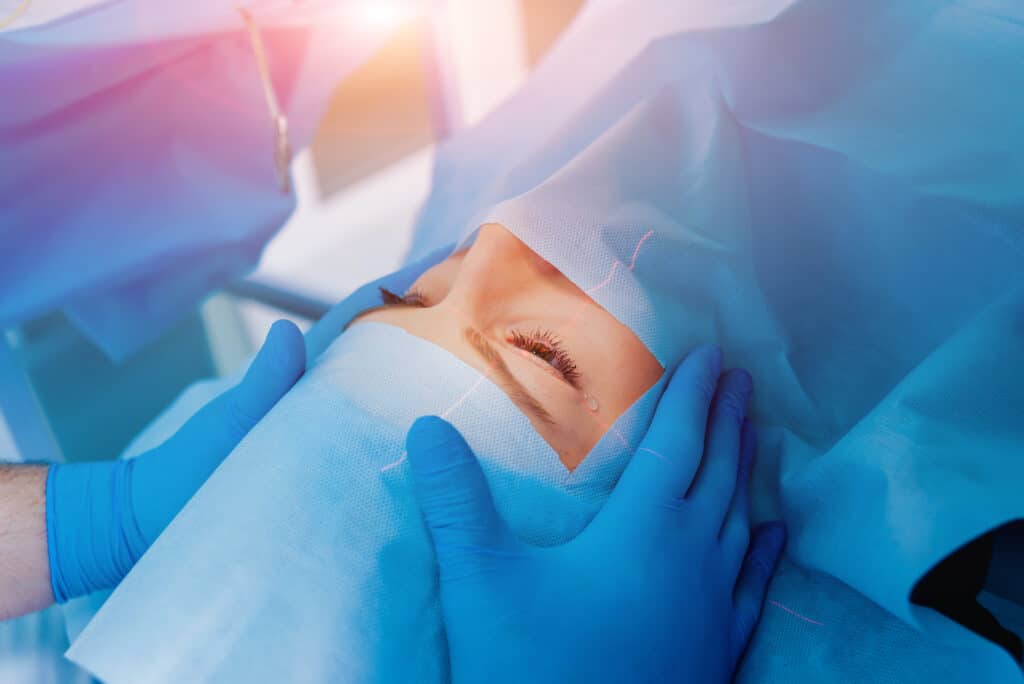Comparing SMILE and LASIK Eye Procedures
June 4, 2020
When looking into refractive eye surgery options, two of the most common procedures you will likely consider will be SMILE (Small Incision Lenticule Extraction) and LASIK (Laser-Assisted in Situ Keratomileusis) – and for good reason. Both procedures are tried and true methods of vision correction that can provide you the freedom of sharp vision without (or with reduced use) of contacts and eyeglasses.
While both address refractive errors by reshaping parts of the cornea, they are different procedures and may be ideal for different types of candidates. Each has its own distinct advantages, but both are viable options to improve vision.
Let’s take a closer look at the newer of the two procedures, SMILE, and assess how it specifically compares with LASIK.

What Is SMILE?
SMILE (also known as ReLEx SMILE) is a cutting-edge laser refractive surgery used to treat myopia (nearsightedness) and some astigmatism. It has also been coined as the “flapless laser surgery” which underscores one of its key differentiators to LASIK. The only laser currently able and approved to perform SMILE is the state-of-the-art VisuMax laser which is proprietary technology from Carl Zeiss Meditec.
This is a one-step, minimally invasive, and flapless procedure. During the operation, an extremely precise computer-guided femtosecond laser is used to generate pulses on the center of the cornea. The pulses from the femtosecond laser create tiny bubbles to define an outline for the targeted corneal tissue (called a lenticule) on the stroma that needs to be removed.
Utilizing this outline, a small arc-shaped incision of less than four millimeters is made on the cornea to create a connecting tunnel that allows the surgeon to access the tissue and perform the lenticule extraction. The removal of the lenticule, which is about the size of a contact lens, will result in a gently reshaped cornea and corrected vision for the patient.
Smile is ideal for patients that have a myopic prescription between -1 and -10 diopters and astigmatism up to -3 diopters.
What Is LASIK?
For comparison’s sake, LASIK has been an industry mainstay for laser refractive surgery for more than 25 years. LASIK can correct vision for those who are nearsighted, farsighted, or have astigmatism.
During the LASIK procedure, a laser is used to make a small flap across the cornea with an opening of approximately 20 mm. The flap is folded back, and an excimer laser is used to reshape the cornea, allowing the eye to focus clearly. The flap is then folded back into its original position where it is able to heal naturally without stitches.
Visual recovery with LASIK typically takes between two and seven days, however a full recovery may take six months or more.
Is SMILE Eye Surgery Safe?
Yes. SMILE has created better vision for more than two million patients worldwide and is a proven and consistent laser vision correction procedure. It was approved by the FDA in 2016 and has been shown to be safe and effective in both FDA trials and in international studies. Clinical trials for SMILE have also found it to be just as safe and accurate as LASIK. After a thorough eye exam and consultation to determine if you are a suitable candidate for the operation, your surgeon will discuss your options with you and help you make the right decision for your vision.
As with any refractive surgery, there are possible risks, complications, and side effects.
The Path to Clearer Vision Starts Here
What Is the Recovery Time for SMILE?
Immediately following your SMILE procedure, you will relax in a low-light recovery room for about 30 minutes. This gives your eyes time to adjust to your new laser enhancements and allows you time for your provided sedative to wear off.
In most cases, patients who undergo a SMILE eye surgery will have a vision improvement by about 80% within the first few hours, and reach their full visual recovery within as little as one week. The corneal incision made to conduct the lenticule extraction will heal within a few days without the need of stitches or additional intervention. Many patients are able to return to work the very next day after surgery, but needing two to three days of recovery is not uncommon
Even though the healing process is impressively quick with SMILE, you will still need assistance driving home and will need to refrain from vision-focused activities for the rest of your surgery day (such as driving, working, reading, or watching TV).
How Much Does SMILE Eye Surgery Cost?
SMILE continues to get more affordable as it becomes more popular and ophthalmologists are able to get the necessary training, equipment, and experience for the procedure. While SMILE (or any vision correction procedure) is not cheap, we encourage you to consider this as an investment in your quality of life and the value that it will bring you over time.
The cost of SMILE may fluctuate on a variety of factors, including the location of the clinic, the surgeon’s expertise and demand, and what follow-ups and treatments are required after the surgery has concluded. It is reasonable to expect that your SMILE surgery will cost in the range of $2,000 to $3,000 per eye. While all forms of vision correction can be expensive, either by way of a surgery payment or over your lifetime with glasses and contacts expenses, we encourage you to invest in a long-term plan that matches your lifestyle.
At Heart of Texas Eye Institute, we offer multiple low monthly payment plans and 0% financing options that can fit nearly any budget.
Is SMILE Better Than LASIK?
In comparison to LASIK, SMILE offers several benefits but there are pros and cons for each. As far as the end-results are concerned, both procedures are proven, consistent, and produce impressive visual acuity for the correction of nearsightedness and some astigmatism. While SMILE primarily intended to treat nearsightedness, LASIK treats all common refractive errors and can achieve stellar results for those who are farsighted or have astigmatism.
In some cases, those who would not be suitable candidates for LASIK may be able to get a SMILE procedure instead. This includes patients who have mild to moderate dry eye or a thinner-than-average cornea. This being the case, your eye health and existing vision deficiencies may predetermine your suitability for one procedure over the other regardless of your preference.
Both LASIK and SMILE are incredibly quick procedures, typically taking less than ten minutes for each eye. The lasers used are active only for a small fraction of this time. Both procedures also produce predictable results, leading to at least 20/40 vision for nearly all patients and commonly 20/20 vision for many others.
Here are some key considerations on how these two procedures compare and differ:
- Physical recovery time for SMILE is faster and is met with less discomfort than LASIK, however LASIK tends to have a faster visual recovery.
- SMILE is generally considered to be a more gentle procedure that maintains the structural integrity and organic composition of the cornea much better. This preserved natural biomechanical state of the cornea helps protect the eye from friction and eye rubbing. Since no corneal flap is created with SMILE, there is no inherent risk of flap complications (such as folding or displacement) as is present with LASIK.
With no flap created during SMILE, patients can also resume activities like wearing eye make-up, exercising, and playing sports more quickly. - Since LASIK creates a flap-like incision around the cornea, it is more invasive and results in a lengthier physical recovery time. There is also a higher risk for needing an additional corrective procedure with LASIK than with SMILE.
- A much higher percentage of LASIK patients experience dry eye symptoms than those who undergo SMILE. This can be attributed to fewer corneal nerves being affected during the SMILE procedure’s small keyhole incision, making dry eye less likely. Because more of the surface cornea remains intact with SMILE, a more natural tear production is maintained during the healing period.
- Given that SMILE is a newer procedure, its long-term effectiveness has yet to be proven in the same way that has been established with LASIK. This also means that most surgeons likely have significantly more experience with LASIK surgery than with SMILE, and there are generally fewer SMILE specialists.
- LASIK utilizes an excimer laser to reshape the cornea, which can create a noticeable odor and loud clicking noises during the procedure. Because SMILE solely uses a VisuMax femtosecond laser, it is both odorless and quiet.
- LASIK and PRK (photorefractive keratectomy) have the potential to treat higher-order aberrations that can affect night vision, while SMILE cannot.
Conclusion
So is small incision lenticule extraction (SMILE) or LASIK the right eye surgery for you? It is important to get a comprehensive professional assessment and a detailed eye examination from a trusted ophthalmologist or surgeon to determine if you are a good fit for either procedure, or an entirely different one. This professional recommendation will be catered to your unique needs, including the type of visual correction needed and your lifestyle.
As comparable procedures, we believe that both SMILE and LASIK are excellent refractive laser surgery options and both are proudly offered by the doctors at Heart of Texas Eye Institute. Since SMILE and LASIK are each trusted and proven, we are confident that either one will provide life-changing improvements to your vision and quality of life.
To see if LASIK or SMILE are right for you, please call us or request a free consultation.


